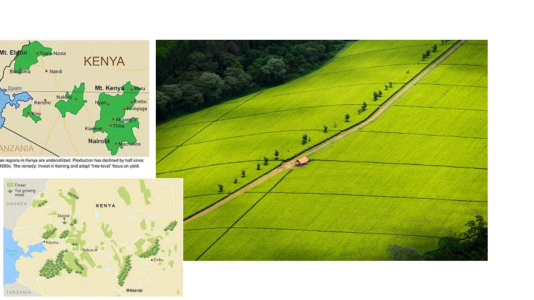UK Tea Industry Calls for Climate Targets to Protect Largest Exporter Kenya
Tea was first discovered by the Chinese Emperor Shen Nong in 2737 BC. Tea is also native to Assam region, India. Later on, following Portuguese princess Catherine’s introduction of tea to England in 1660 AD, Brits also started loving this refreshing, stimulating, calming and healthy beverage. Eventually tea became the national beverage in England. There after reputed tea brands like Yorkshire Tea, Twinings, Ahmad Tea, PG Tips, Clipper Tea, Tea Pigs, Typhoo etc emerged with the aim of providing a good cup of tea to Brits. As preventionweb had reported, A new document from the charity Christian Aid shows that Kenya, where half of UK tea imports are coming from, is facing many climate related impacts like increasing temperatures, erratic rainfall, droughts and new insect infestations.

These are forecast to destroy 26.2% of the country’s optimal tea growing areas by 2050. Areas with medium quality growing conditions are to be cut by 39% in the next thirty years because of climate change.
Being the largest exporter of black tea, the fate of the Kenyan tea sector has a considerable effect on tea drinkers around the world. In 2017, Out of 125,810 tons of tea imported by UK. 62,222 tons came from Kenya, that is more than the rest of the top ten biggest importing countries combined.
Concerns from Leading Tea Brands and Fairtrade Organization
- Twinings: “We are aware that climate change is accelerating fast and poses a risk to smallholder tea farmers. As extreme weather and natural disasters continue to affect the sowing and growing of healthy crops, the people who supply the ingredients for our products will become ever more vulnerable.”
- PG Tips: Fiachra Moloney, of PG Tips maker Unilever said it was vital that COP26 was a success: “The climate crisis affects people all over the world. In East Africa, where so much of our tea comes from, climate change is putting the livelihoods of the people who grow tea for us at risk. As Unilever, we call on governments to bring forward ambitious climate targets, policies and plans ahead of COP26 that will help us all work together to limit global average temperature rise to 1.5 degrees.”
- Tetley: “Water is vital to sustain the future of the tea industry. Tea growing regions rely on the rainy seasons to keep their tea bushes healthy and productive, but it’s evident that seasonal rains are becoming more unpredictable and the impact this has on crop growth is far reaching; not least in loss of income of those employed at a local level on the farms.
Let’s hope that the governments of tropical tea growing nations and the international tea community will assist tea farmers to minimize the effect of climate change. The best solution with in the farm is to make it an agro forest. For example, planters can increase the bio diversity by planting cover crops, green manure crops, inter crops, wind belts, live fences, shade trees and so many other economical varieties other than tea. It creates a unique, pleasant micro-climate within the farm. Agro-forest concept helps to bring down the temperature, increase predators and the quality of product in long term. This concept can be seen to a certain extent in Sri Lanka (Ceylon) and India. But unfortunately not much in Africa. So it’s high time for Africa to consider more on quality rather than volume. The Best example is Satemwa tea estate in Malawi.
View More Latest Tea News + Articles: http://www.teawithnipun.com/
References
- Main Source: https://www.preventionweb.net/news/view/77706



